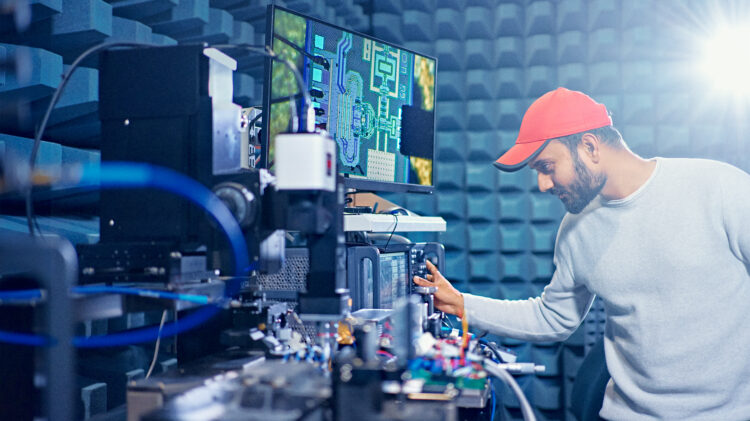
High-Frequency Electronics for 6G Receiver
A groundbreaking achievement in the field of high-frequency electronics has been made with the successful implementation of a radio receiver front-end operating at an astounding 300 GHz. This research, supported by the Academy of Finland’s 6G Flagship programme, paves the way for ultra-high-speed wireless communication and marks a milestone in the advancement of 6G radio implementation.
The primary focus of the research is the design of the radio receiver’s front end, which combines the principles of analogue circuit theory, microwave theory, and radio engineering. In his dissertation, Sumit Singh developed a highly efficient receiver front end capable of operating close to the maximum oscillation frequency of semiconductor technology.
In modern radio systems, information is transmitted through semiconductor material and the atmosphere. However, signal transmission efficiency is often hindered by the parasitics of semiconductor technology and natural phenomena in the environment. While this thesis does not delve into improving semiconductor technology or the radio propagation channel, it presents an architecture and design methodology of radio frequency integrated circuits (RFICs) to enhance signal transmission efficiency within the radio receiver front end.
The layout of signal paths and the choice of semiconductor technology plays a crucial role in mitigating the parasitics associated with high-frequency carrier signals. Through meticulous architectural choices, circuit topologies, and layout strategies, RF researchers of 6G Flagship have successfully implemented a receiver front-end that operates at an impressive 300 GHz while maintaining exceptional sensitivity and efficiency. This accomplishment represents a significant technological breakthrough that contributes to the advancement of 6G radio implementation.
“The successful implementation of the radio receiver front-end at 300 GHz opens up new possibilities for ultra-high-speed wireless communication. With an increased frequency, more bandwidth becomes available, enabling faster and more reliable data transmission. This achievement brings us one step closer to realising the potential of 6G technology and its transformative impact on various industries, including healthcare, transportation, and entertainment”, Sumit Singh muses.
Master of Science in Engineering, Sumit Singh will hold his thesis defence at the University of Oulu on Tuesday, June 25. The title of the dissertation is Radio Receiver Front-End ICs at the Sub-THz/THz Frequency Range in Silicon Technology. The opponent is Professor Piet Wambacq (University of Vrie, Brussels and IMEC, Belgium), and the custos is Professor Aarno Pärssinen (University of Oulu). The event starts at noon at the Linnanmaa campus of the University of Oulu, Finland.